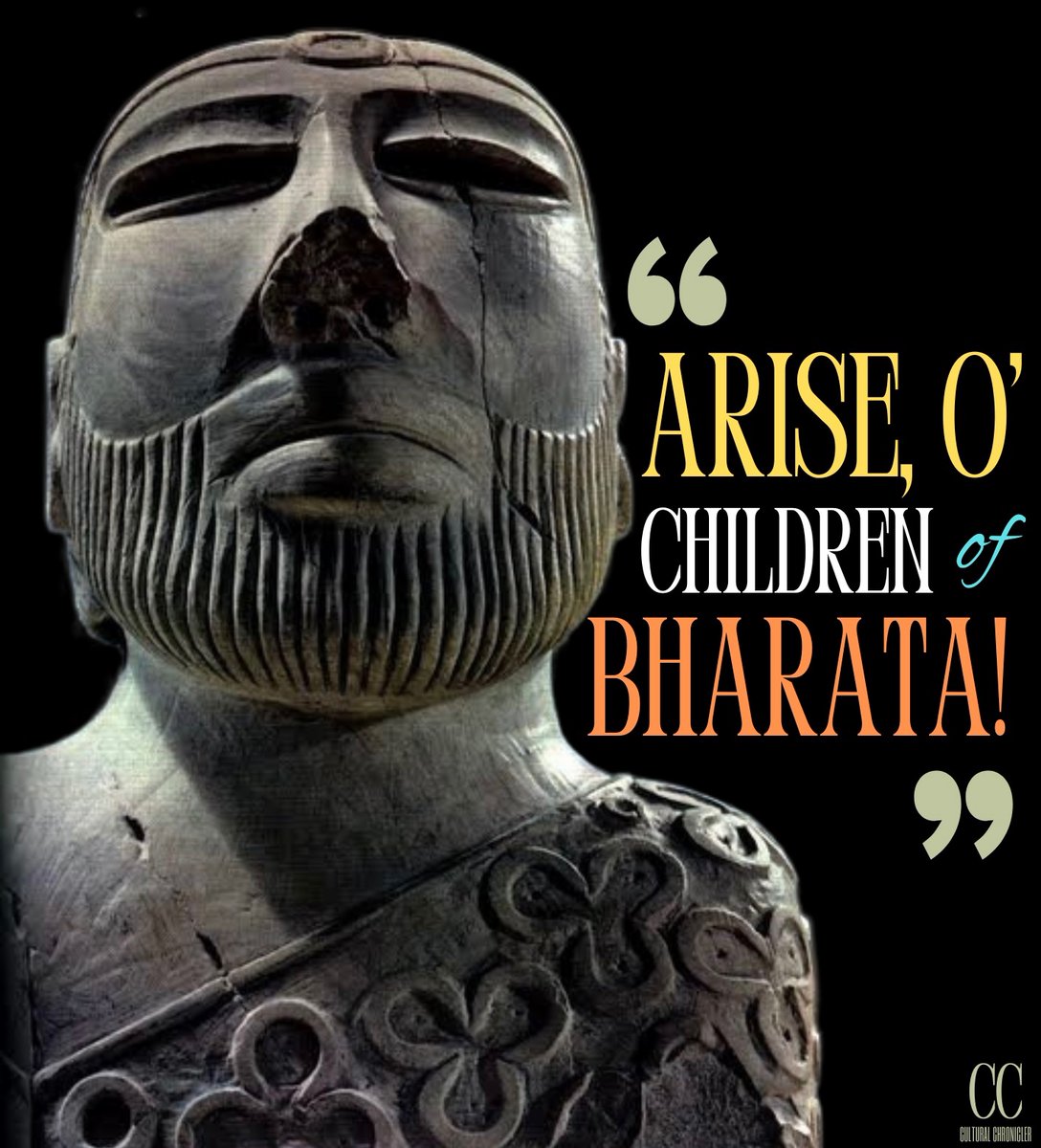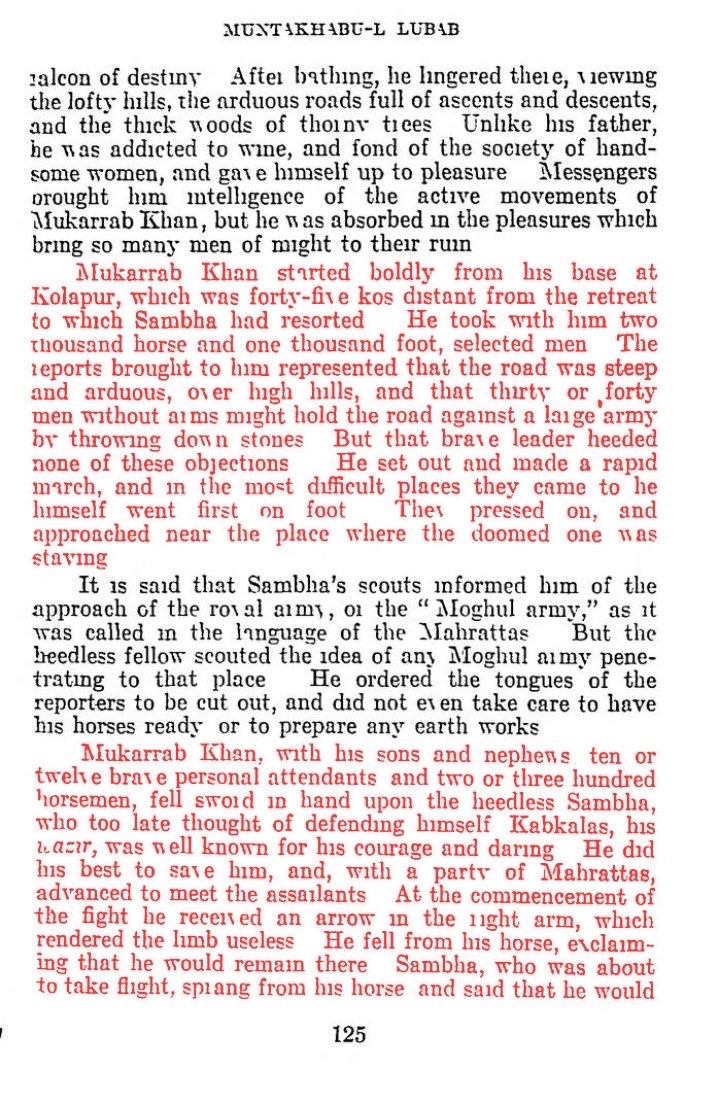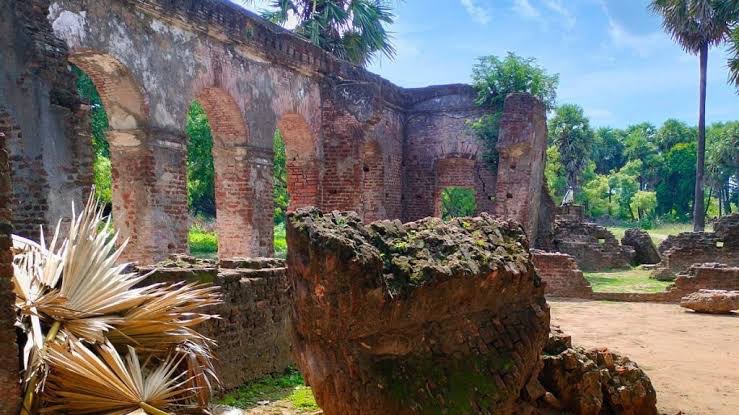
Aspire, Reclaim, Conquer.
Hindu Hriday Samrat | Rustic Revolutionary | Bharat-pilled | Itihāsa Enjoyer | AI Connoisseur | Scion of Shitpоsting | Founder, NPI.
How to get URL link on X (Twitter) App


 Arrian wasn’t your average Greek historian.
Arrian wasn’t your average Greek historian. 


 On May 4, 1799, the walls of Srirangapatna trembled under British cannon fire as the forces of the East India Company breached the once-mighty fortress of Tipu Sultan.
On May 4, 1799, the walls of Srirangapatna trembled under British cannon fire as the forces of the East India Company breached the once-mighty fortress of Tipu Sultan. 

 Punyashlok Ahilya Bai Holkar, one of the most respected rulers of early modern India, was a beacon of wisdom, justice, and civilizational renaissance.
Punyashlok Ahilya Bai Holkar, one of the most respected rulers of early modern India, was a beacon of wisdom, justice, and civilizational renaissance. 

 In the grand saga of Indian history, few figures command as much awe & intrigue as Lalitaditya, the indomitable ruler of the Karkota dynasty.
In the grand saga of Indian history, few figures command as much awe & intrigue as Lalitaditya, the indomitable ruler of the Karkota dynasty. 


 One excerpt describes the imperial army’s conquest, where the temple of “Bāhir Deo” was the first to be destroyed.
One excerpt describes the imperial army’s conquest, where the temple of “Bāhir Deo” was the first to be destroyed. 

 I speak to you from the shadows of time, from an age when men raised cities like mountains, where rivers bowed before the will of the wise, and where the hands of craftsmen rivaled the work of the Gods themselves!
I speak to you from the shadows of time, from an age when men raised cities like mountains, where rivers bowed before the will of the wise, and where the hands of craftsmen rivaled the work of the Gods themselves!

 In early 1689, Sambhaji was in Sangameshwar with his trusted advisor, Kavi Kalash. A local informer betrayed his location to the Mughals.
In early 1689, Sambhaji was in Sangameshwar with his trusted advisor, Kavi Kalash. A local informer betrayed his location to the Mughals. 



 Nestled between Veerampattinam Beach and the Ariyankuppam River are the remnants of an ancient port city once known as Podouke, mentioned in the 1st-century Periplus of the Erythraean Sea.
Nestled between Veerampattinam Beach and the Ariyankuppam River are the remnants of an ancient port city once known as Podouke, mentioned in the 1st-century Periplus of the Erythraean Sea. 


 Valmiki Ramayana (India, ~5th-4th c. BCE)
Valmiki Ramayana (India, ~5th-4th c. BCE)

 Dating back to the early 3rd millennium BCE, it was once home to at least 40,000 people & played a huge role in shaping early urban life.
Dating back to the early 3rd millennium BCE, it was once home to at least 40,000 people & played a huge role in shaping early urban life. 

 Most cities had a citadel, a lower town, defensive walls, proper drainage & water management systems.
Most cities had a citadel, a lower town, defensive walls, proper drainage & water management systems. 

 Picture this: It’s midnight. Aurangzeb’s massive Mughal camp in the Deccan is suddenly hit by a flood.
Picture this: It’s midnight. Aurangzeb’s massive Mughal camp in the Deccan is suddenly hit by a flood. 

 The Battle of Talikota in 1565 was lost due to the betrayal of the two Muslim commanders, the Gilani brothers, who defected to the Muslim Sultanates during a critical juncture in the conflict, sealing Rama Raya’s fate and the fall of Vijayanagara Empire.
The Battle of Talikota in 1565 was lost due to the betrayal of the two Muslim commanders, the Gilani brothers, who defected to the Muslim Sultanates during a critical juncture in the conflict, sealing Rama Raya’s fate and the fall of Vijayanagara Empire. 

 The idea of Ravana having ten heads comes from a shloka in the Aranya Kanda, when we’re first introduced to Ravana.
The idea of Ravana having ten heads comes from a shloka in the Aranya Kanda, when we’re first introduced to Ravana. 

 The Fire Temple of Baku is more than a historical site; it’s a narrative of cultural fusion.
The Fire Temple of Baku is more than a historical site; it’s a narrative of cultural fusion. 

 Shri Ram lifting the mighty Shivadhanush (Shiva’s bow), winning Mata Sita’s hand in marriage.
Shri Ram lifting the mighty Shivadhanush (Shiva’s bow), winning Mata Sita’s hand in marriage. 

 The grand city of Indraprastha, a symbol of power and ambition.
The grand city of Indraprastha, a symbol of power and ambition. 

 The Han dynasty—once the epitome of power, culture, and unity in ancient China—was crumbling by this time.
The Han dynasty—once the epitome of power, culture, and unity in ancient China—was crumbling by this time. 

 In 1958, Chairman Mao, decided his nation would wage war—not against a foreign power or a rebel faction, but against sparrows.
In 1958, Chairman Mao, decided his nation would wage war—not against a foreign power or a rebel faction, but against sparrows. 

 The year was 757 CE. Rebel forces from the Yan dynasty were on a rampage, tearing through cities loyal to the Tang dynasty.
The year was 757 CE. Rebel forces from the Yan dynasty were on a rampage, tearing through cities loyal to the Tang dynasty. 